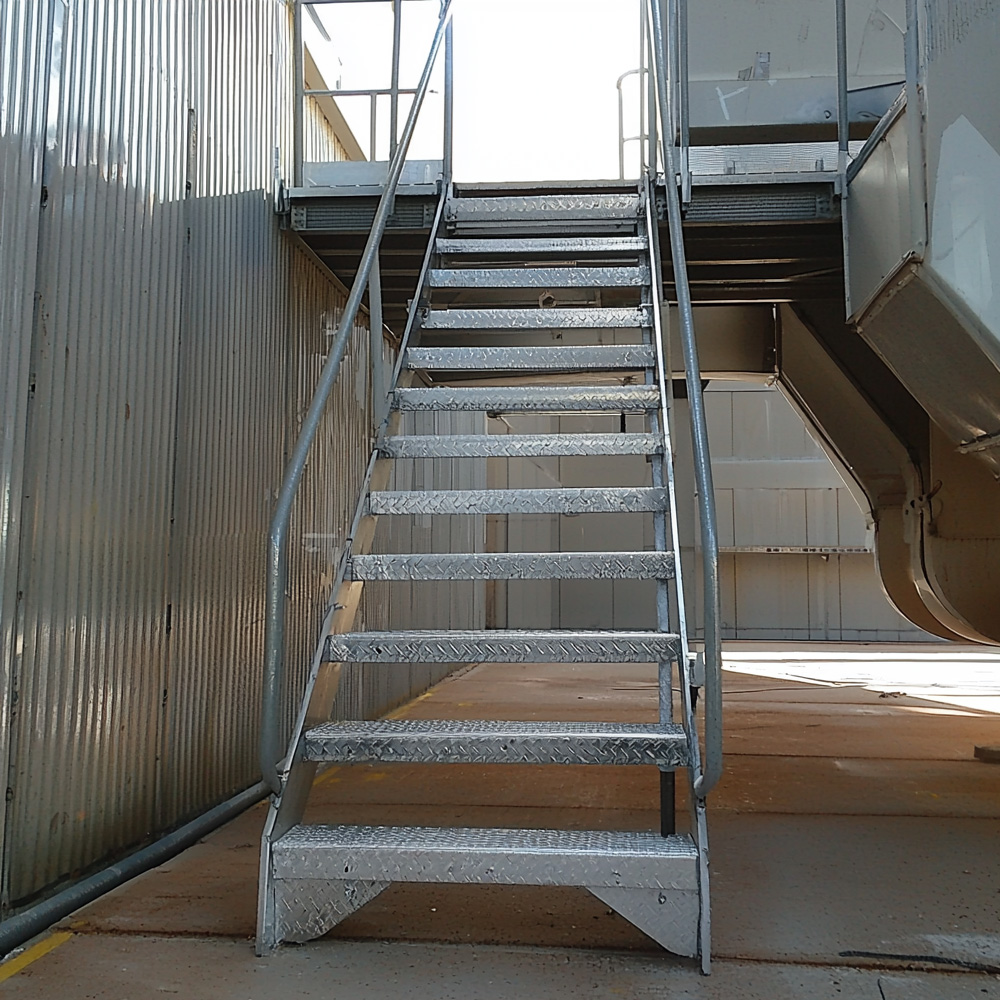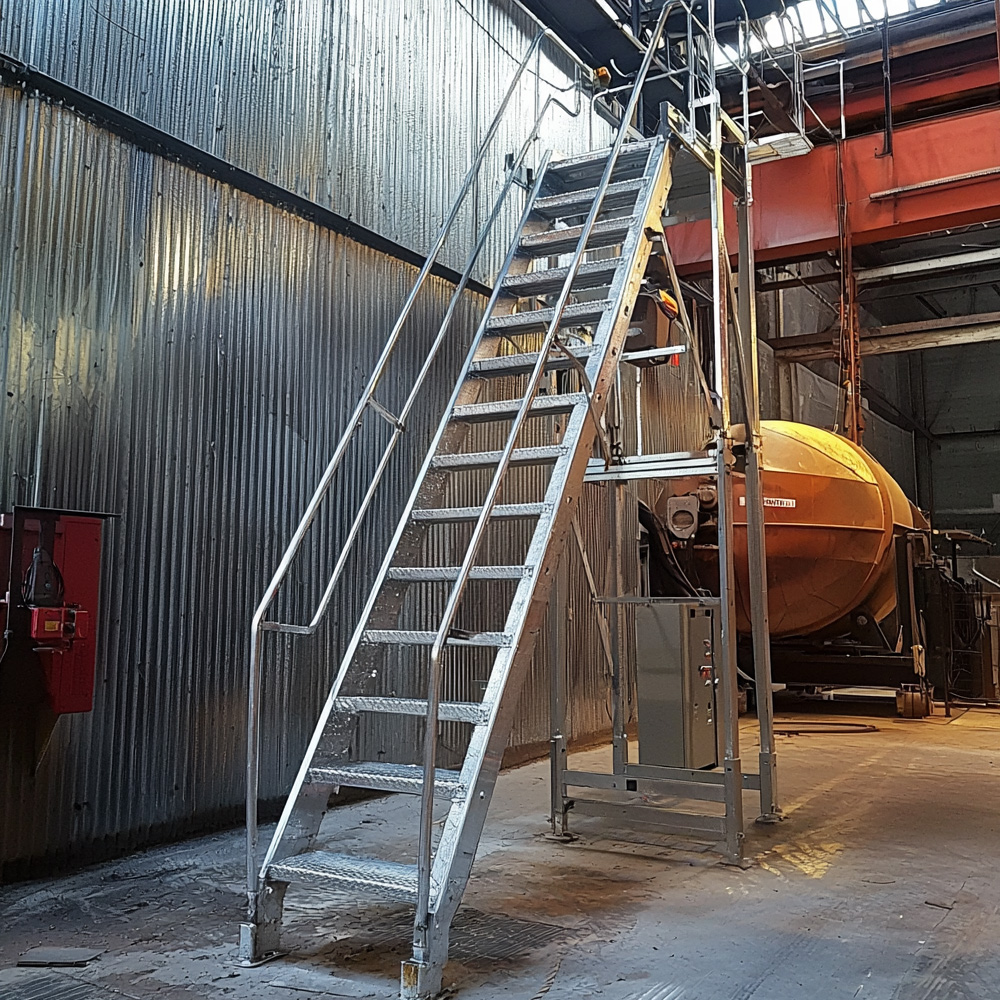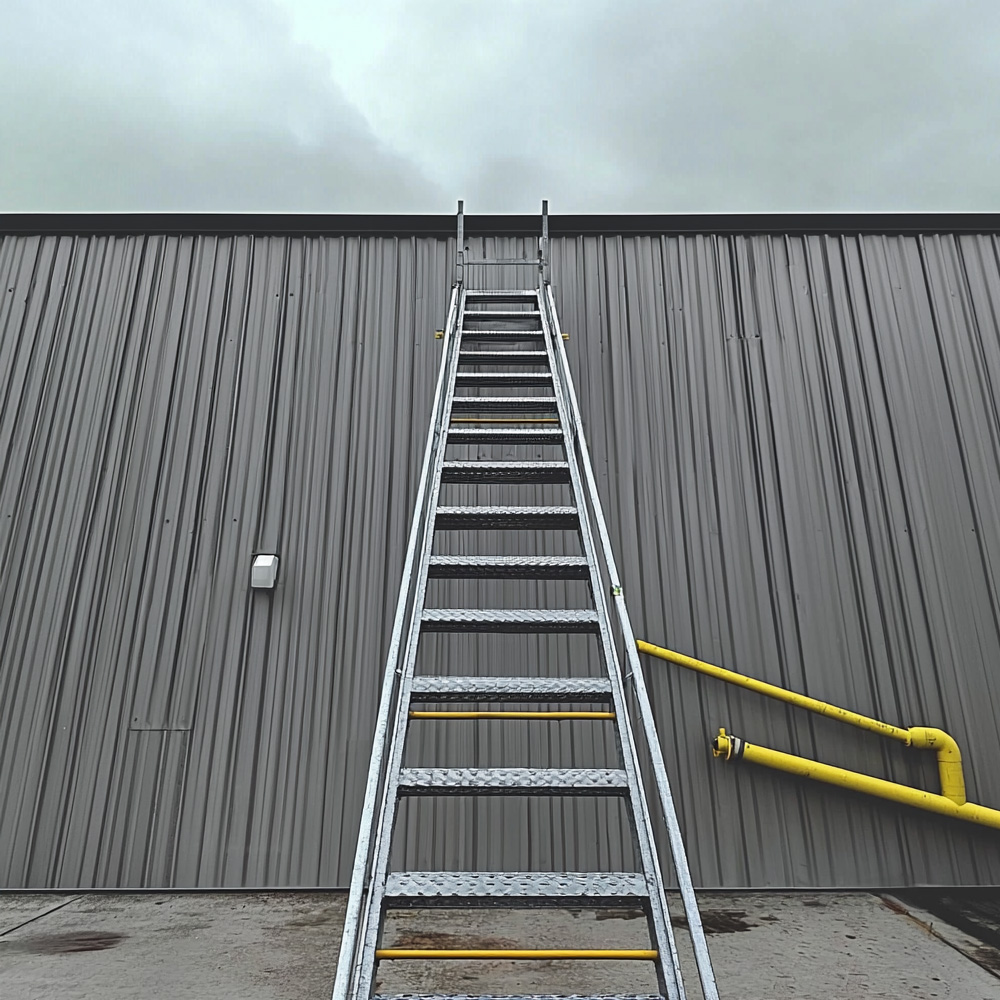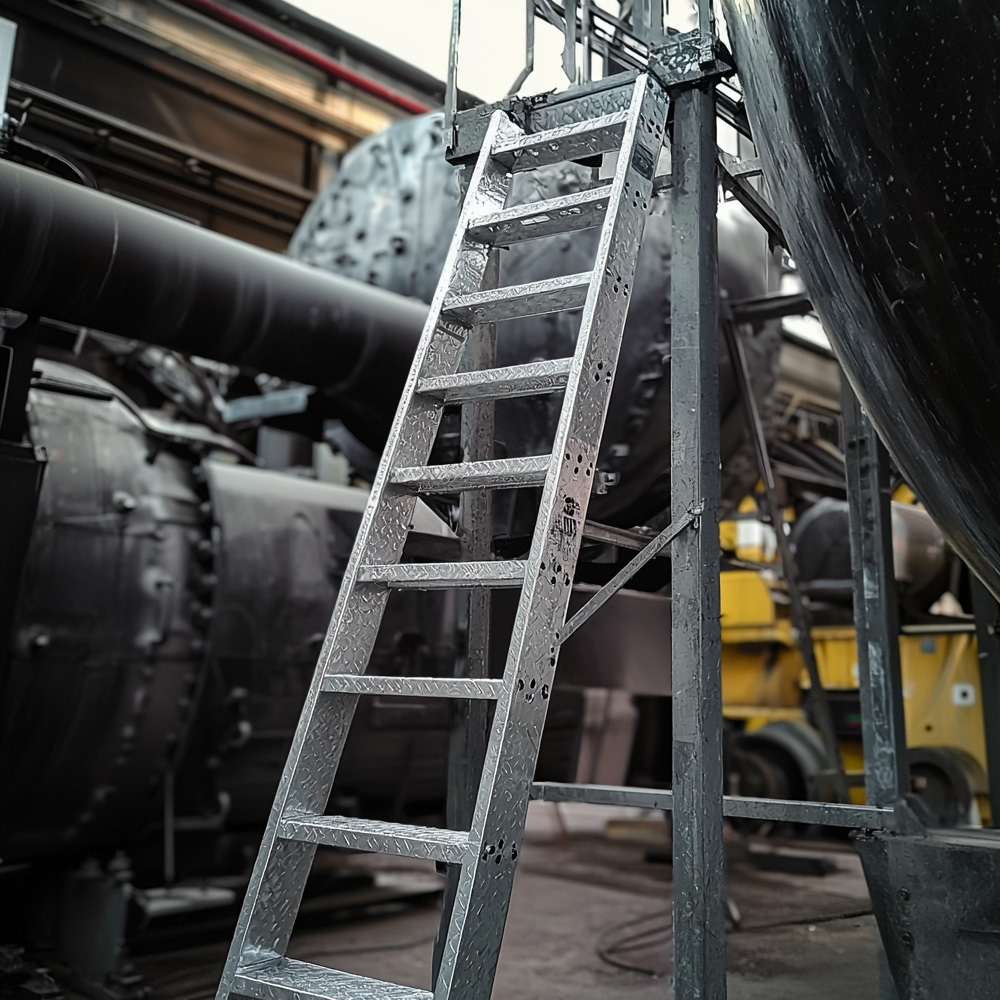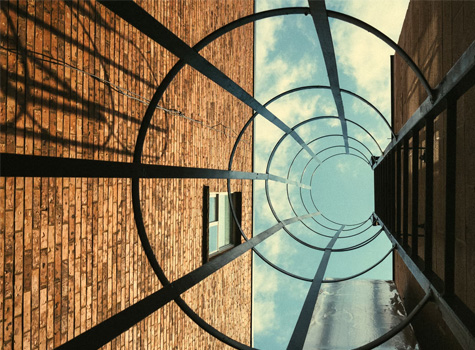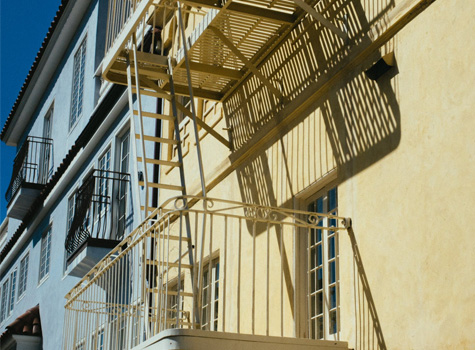Bespoke Ladders
A Ship ladder (also known as a companionway ladder) is used in locations where you can’t have a vertical ladder in place, but you also can’t fit a full staircase in either.
They are characterised as a hybrid part ladder part stairs construction, with an angle designed to make them safer and easier to use.
They’re commonly used for access and maintenance platforms, both inside factories and on rooftops, as well as used to access roof hatches.
Steelgram have 50 years of experience in steel fabrication, and we will design, manufacture, and install your ship ladders to meet your specific project requirements.
We also provide railings and handrail solutions, alongside assisting in any structural steelwork requirements you need.

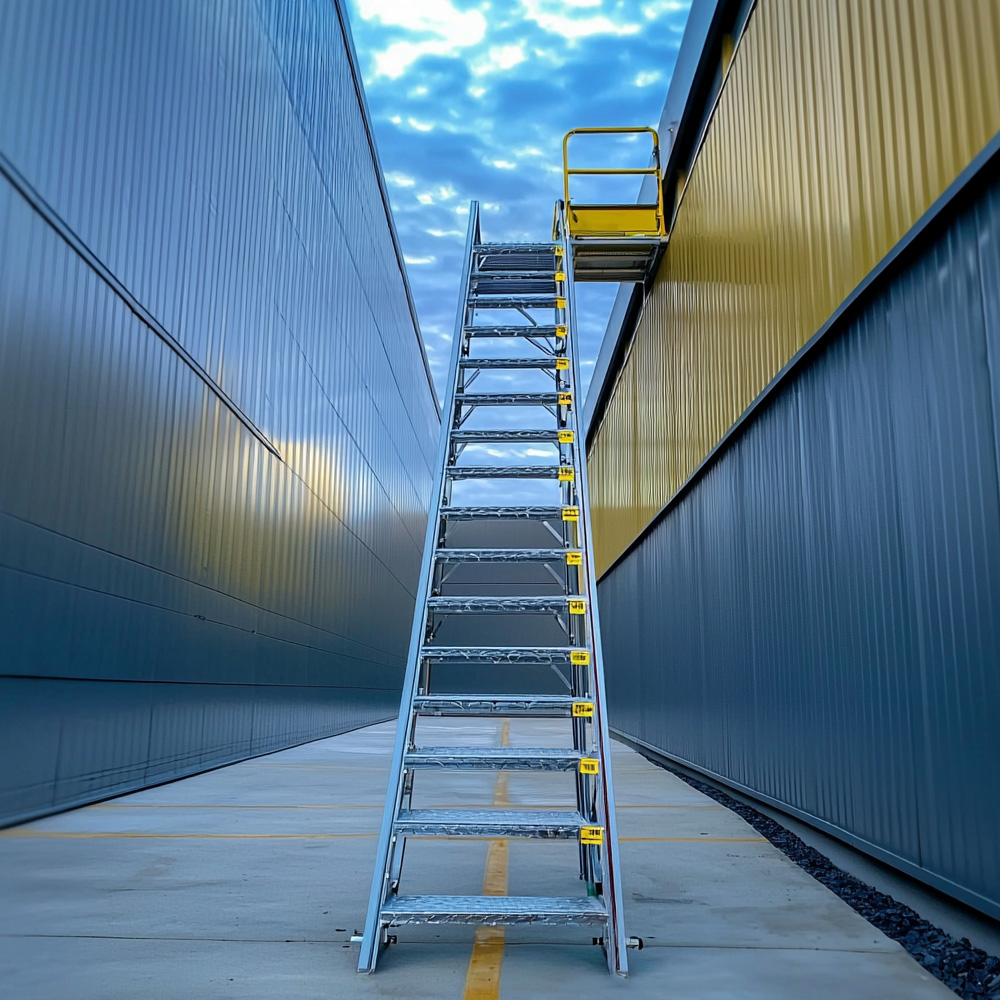
GET A QUOTE
Every project is designed from scratch to your specific needs, so click the button below to fill out our quick quote form now:
TRUSTED BY

INDUSTRY SECTORS
Key Benefits
When overseeing complex industrial operations, even small adjustments can lead to significant improvements.
The access equipment you implement, particularly ladders for reaching elevated or challenging areas, is no exception.
Rather than relying on generic options, which can introduce unforeseen hazards and inefficiencies, there’s a compelling case for precision-engineered solutions designed specifically for your environment.
Enhanced Safety: Designed for Your Specific Needs
In any industrial setting, safety is a critical responsibility. You might recall instances where the standard ladders in your plant didn’t quite meet your needs.
Perhaps they didn’t align perfectly with the machinery they were meant to access, or maybe their generic design made them a hazard in an environment where precision is everything. A specialized solution eliminates these risks because it’s created to align with your exact requirements.
Consider a facility where chemical exposure is a concern. A standard model’s material might corrode over time, leading to structural weaknesses. But a ladder designed specifically for these conditions can be fabricated using corrosion-resistant alloys or specialized coatings that ensure longevity and maintain safety over years of use.
Additionally, the precise design can incorporate ergonomic considerations—such as handrails positioned for optimal grip or treads with enhanced traction—reducing the physical strain on workers and preventing slips.
Beyond just fitting the space, a custom-built ladder can be integrated into your overall safety strategy. This means considering factors like the frequency of use, the specific tasks being performed, and even the experience level of your team. A tailored solution doesn’t just meet safety standards; it anticipates and mitigates potential risks specific to your operations.
Summary: Precision-engineered ladders not only fit your space perfectly but also incorporate materials and design features that enhance safety and align with your broader safety strategy.
Efficiency: Streamlined Access for Optimized Workflow
In an industrial environment, the cumulative impact of small inefficiencies can be enormous. A ladder that requires frequent repositioning or doesn’t provide direct access to crucial areas can slow down workflows significantly. But with a custom solution, these inefficiencies can be systematically eliminated.
Take, for example, a situation where your team needs to service overhead piping or HVAC systems spread across a large area. A standard option might require workers to repeatedly move it, increasing time spent on the task and introducing opportunities for error.
A purpose-built alternative, however, can be designed to provide multi-point access, with features such as platform extensions or integrated safety gates that allow workers to move freely along the workspace without needing to descend and reposition. This reduces downtime and keeps your operations running smoothly.
Moreover, the design process for a tailored ladder can involve a detailed analysis of your workflow.
By working closely with engineers who understand both the physical environment and the tasks at hand, the equipment can be crafted to integrate seamlessly with your existing operations, reducing disruptions and enhancing productivity.
Summary: Custom-engineered ladders are designed to eliminate inefficiencies, with features that save time and improve overall productivity.
Durability: Built to Last in Your Specific Conditions
The durability of a ladder in an industrial setting is often taken for granted until a failure occurs. Yet, the reality is that the conditions your ladders are exposed to—whether it’s extreme temperatures, chemical exposure, or continuous heavy use—can greatly affect their lifespan. A specialized design, built with these specific conditions in mind, ensures that you’re not just replacing equipment every few years but investing in a solution that stands the test of time.
Consider a ladder installed in an area with high humidity or exposure to caustic substances. Off-the-shelf options may start to rust, warp, or weaken, leading to dangerous situations.
However, a solution designed with these environmental factors in mind, such as those made from marine-grade aluminum, stainless steel, or even advanced composites, can be selected based on their resistance to these specific challenges. Additionally, features like sealed joints or protective coatings can be incorporated to further extend the ladder’s lifespan.
The implications of durability go beyond just the material. The design itself can incorporate features that minimize wear and tear, such as reinforced rungs for heavy traffic areas or shock-absorbing materials where vibration is a concern. This not only prolongs the life of the ladder but also reduces maintenance costs and downtime, something which Steelgram can emphathise with.
Summary: A ladder designed for your specific needs ensures durability by selecting materials and features tailored to the environmental challenges of your facility, leading to long-term savings.
Regulatory Compliance: Meeting Industry Standards with Precision
Navigating the complex web of regulations governing workplace safety can be a daunting task. Yet, compliance is non-negotiable—not only to avoid penalties but to ensure the safety and well-being of your workforce.
A generic ladder might meet basic standards, but when it comes to specific regulations for your industry or location, it can fall short.
Custom designs are built with compliance in mind from the ground up, providing peace of mind and a secure work environment.
Imagine a facility that needs to adhere to stringent health and safety regulations due to the nature of its operations—perhaps because of hazardous materials or high-risk activities.
Off-the-shelf models might only tick the box for general safety standards, but a tailored option can be designed to meet or exceed the specific regulations applicable to your site. This could include anything from specific load-bearing capacities to exacting dimensional requirements or anti-static properties for environments with explosive risks.
Moreover, the process of designing a ladder specifically for your needs can involve consultation with safety experts who ensure that every aspect of the ladder not only complies with current regulations but is future-proofed against upcoming changes. This proactive approach minimizes the risk of non-compliance and avoids costly retrofits down the line.
Summary: Custom-engineered ladders are built to meet specific regulatory requirements, ensuring full compliance and reducing the risk of future regulatory issues.
When you choose a ladder designed specifically for your environment, you’re not just addressing a need; you’re making a strategic investment in the safety, efficiency, and longevity of your operations.
By leveraging expert design and engineering suited to your facility’s unique demands, you ensure that your plant remains at the cutting edge of safety and productivity – and Steelgram are here to help.

